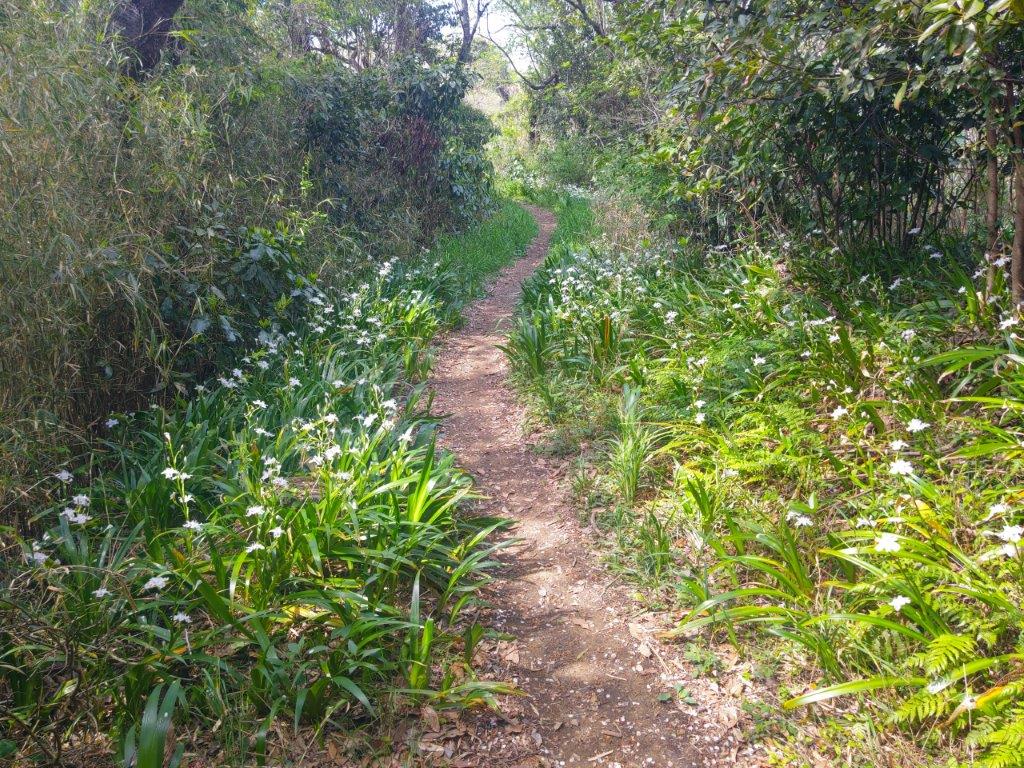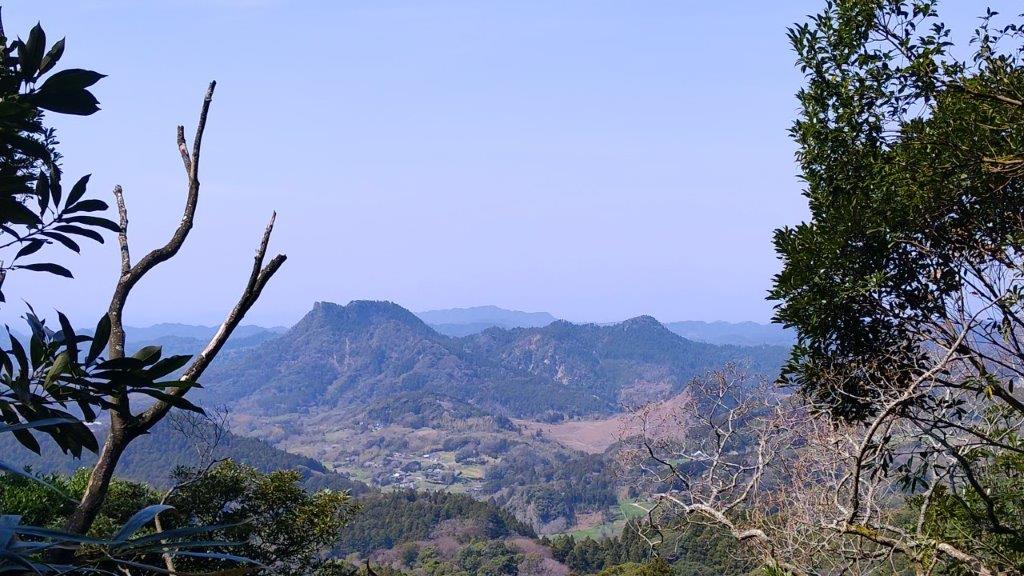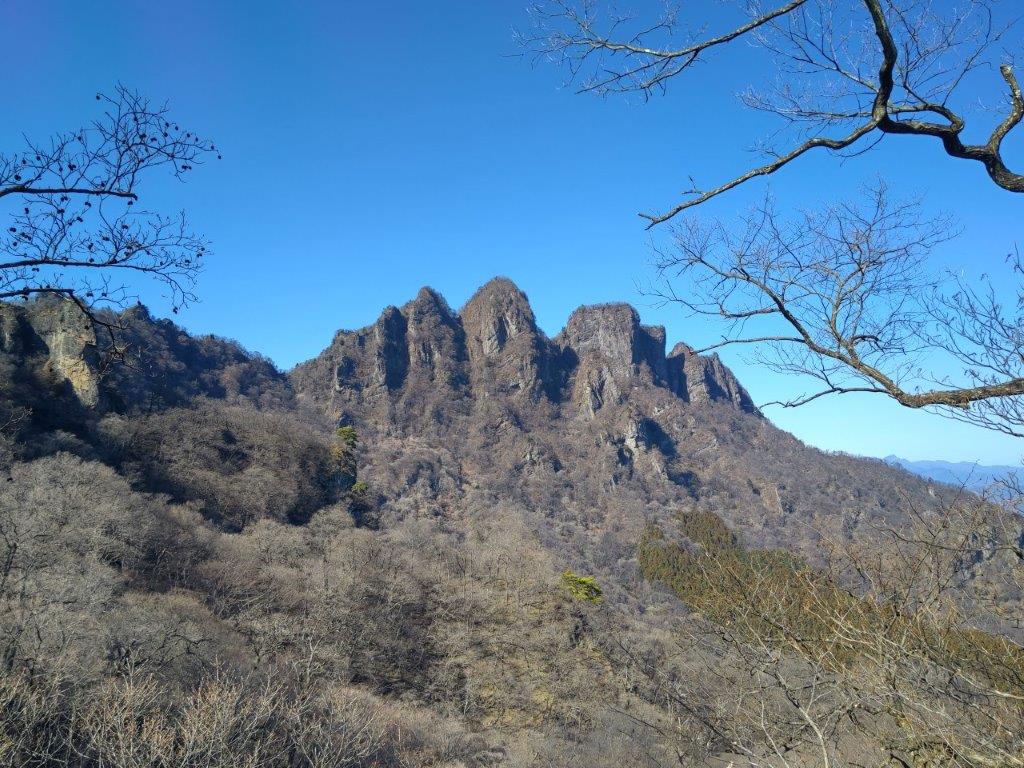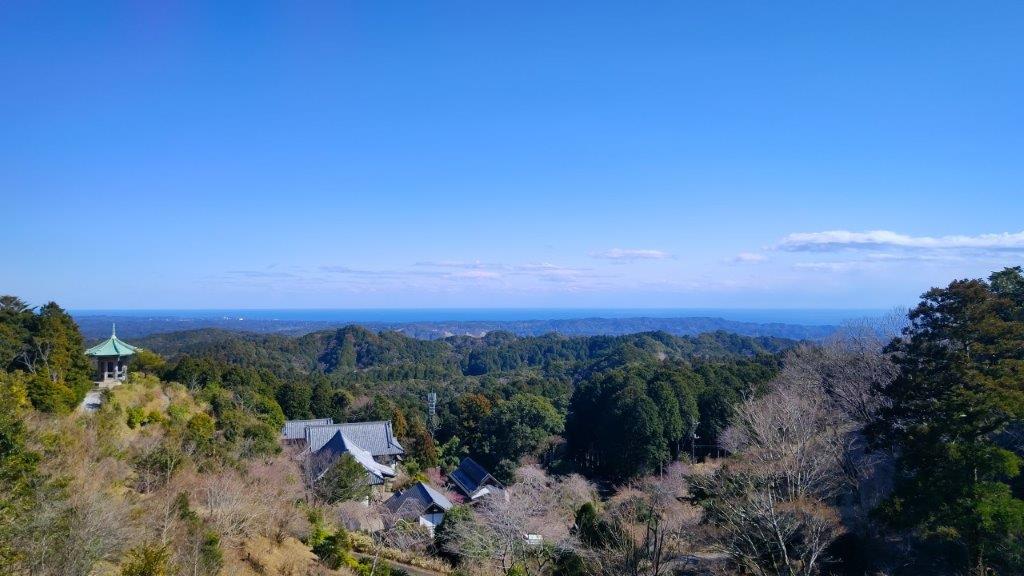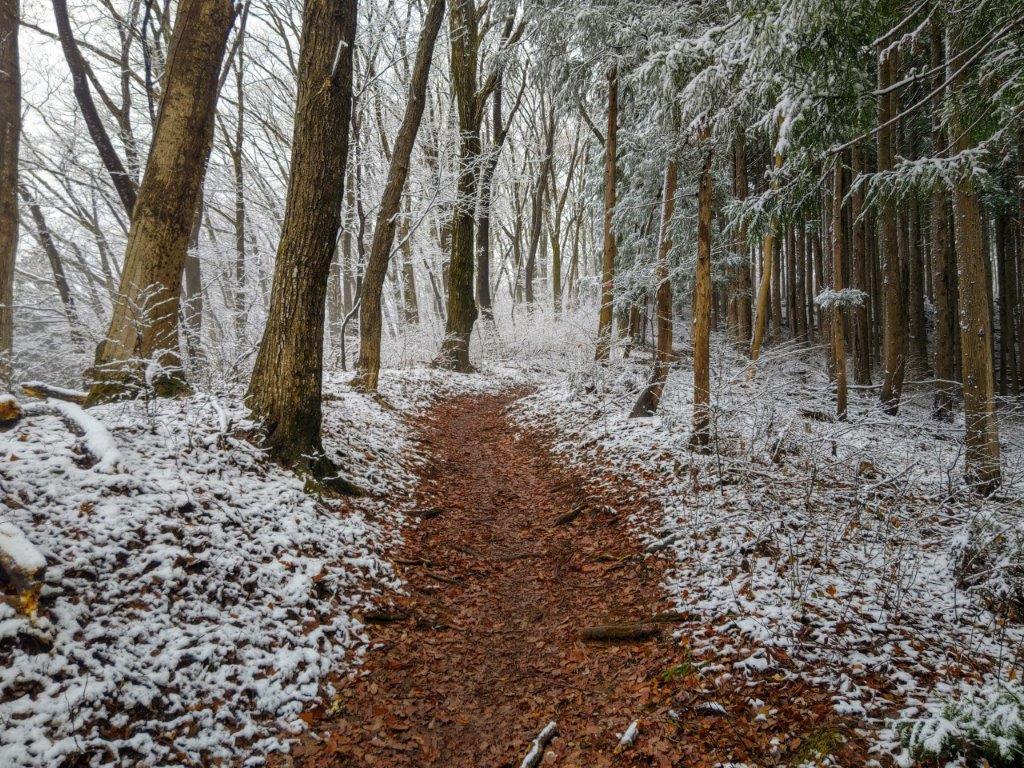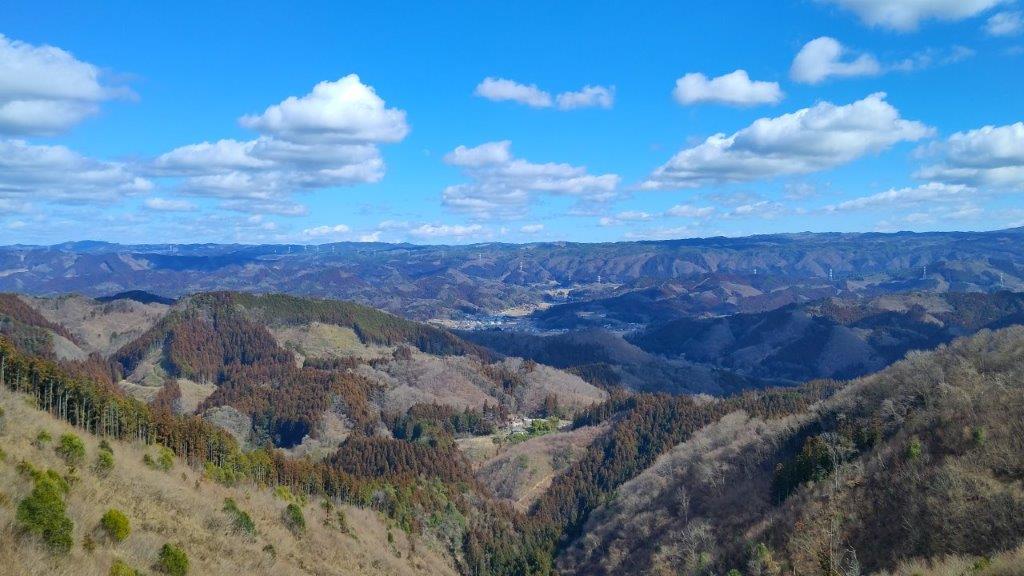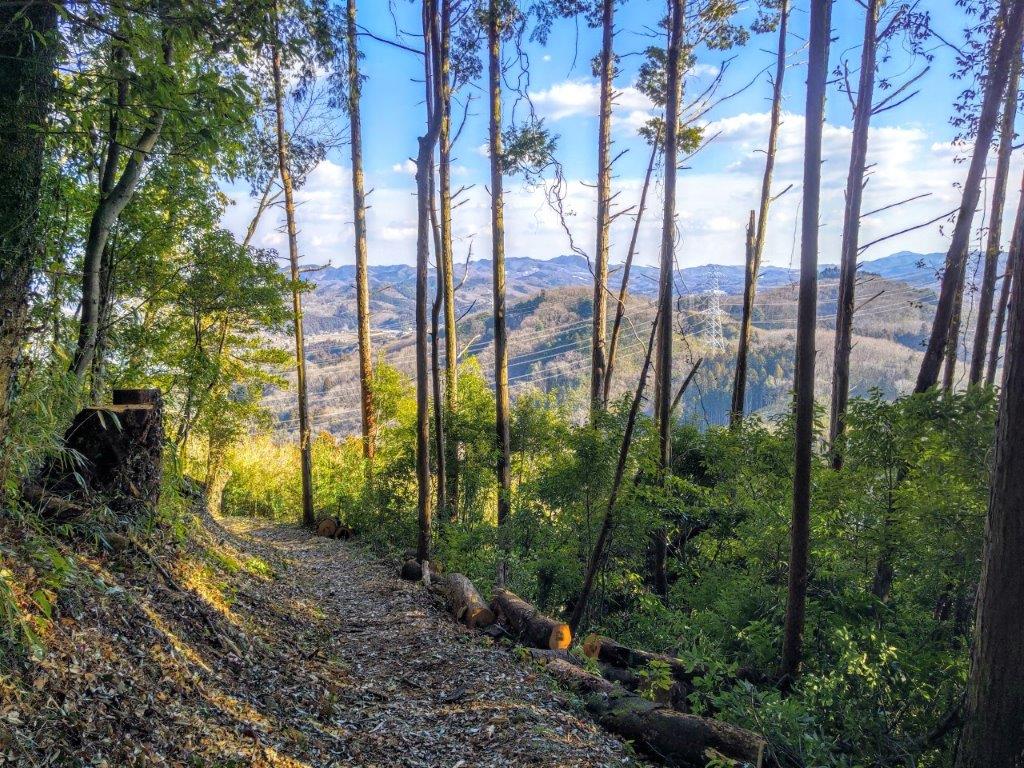I was looking for an easy hike to get back in shape after a three-week break. Considering the Golden Week crowds, I settled on a morning stroll through the Sayama Hills, last visited one year ago. Looking at Google Maps, I found a new trail to explore: it was through a block of adjacent “Totoro’s Forests” surrounding a marsh at the eastern end of the hills. I could then follow the Sayama Lake Perimeter Road to the Saitama Green Forest Museum, and from there revisit two more wetlands on the northern side of the lake.
Hiking in the Sayama hills 狭山丘陵
I would ride the Seibu line to Kotesashi Station, and there, catch a bus for the 15-minute ride to “Waseda Daigaku”, the end of the line and next to several parcels of Totoro’s forest. From the final marsh, I could walk a short way to Miyadera-Nishi bus stop, the end of the line and a thirty-minute ride back to Kotesashi station. The forecast called for blue skies and temperatures approaching 30 degrees. I was looking forward to walking through green forests and wetlands on Greenery Day, and hoped they would keep me cool on an early summer day.
For subscribers, read this Blog Post on Hiking Around Tokyo for a better viewing experience and the latest updates


Start of the hike near Waseda University (right) Log steps for Totoro Forest #33 (left)


Path next to Totoro’s Forest #5 (left) Dirt Road around Sayama Lake (right)
I was glad to be comfortably seated on the half empty local line for the one-hour trip to Kotesashi station, most people preferring further destinations for the holidays. The bus for Waseda University was completed deserted on the weekend (also a holiday) but I could imagine it being packed on a class day. After getting ready and having a late breakfast on the shaded circular bus stop bench, I set off around 1030, already feeling quite warm under the mid-morning sun.

Boardwalk along Totoro’s Forest #51

Grassy Field at the end of Tsuzura Marsh
I was amazed to find a path leading into the forest directly opposite the bus stop, possibly the shortest distance between public transport and full-nature immersion in the area. As I passed Totoro’s Forests #20, 21, 26, 31, 33 & 41, it felt wonderful to be wandering through this nature preserve within the confines of Greater Tokyo. After some ups and downs I reached a wooden bridge spanning Tsuzura Marsh (葛籠湿地), also Totoro’s Forests #51 & 34, where I turned left along a boardwalk and then onto a footpath disappearing into a field of tall grasses at the head of a valley.

Bug Catching Family Walking through Oyado Marsh

Nothing but Green at the Edge of Dragonfly Swamp
I marvelled at being surrounded by green grass in every direction, forming a nice contrast with the blue sky overhead. After carefully treading a path of trampled grass around the field I retraced my steps to the bridge. There I took a path going up on the left but soon turned right and down some log steps into Wako Forest (和幸の森). At the top of a slope I followed a straight path along Totoro’s Forest #5. At 11h30 I reached the Sayama Lake Perimeter Road, following it in a counter-clockwise direction. Less than half an hour later I hopped back onto a path leading to the Forest Museum and Oyado Marsh (大谷戸湿地) where I overtook a net-wielding family hunting for bugs.

Grassy Path near Nishi-Kubo Marsh

One of the Hills of Sayama-Kyuryo
I was pleased to have the trail to myself again as a walked along the left side of the marsh, the muddy waters hidden by tall grasses. At Dragonfly Swamp (トンボ湿地) the path curved right as it reentered the forest; at the next junction I turned left, now merging with my previous hike. After a short climb followed by a descent I reached Nishi-kubo Marsh (西久保湿地), a lovely spot with ponds and a stream wedged between hills and houses. As I was ahead of schedule I spent some time observing clusters of tadpoles happily wiggling in sunny shallow ponds, as well as a grey heron take off and fly away.

Tea Fields surrounding Nishi-Kubo Marsh

View of the Hills of Okumusashi from near Nishi-Kubo Kannon Temple
I suddenly noticed a small, furry creature trotting along the edge of the marsh, either a tanuki or a weasel, but it soon scampered off into the forest. Other trails around the marsh were closed due to typhoon damage and this may account for the absence of people and presence of wildlife. My bus was due soon so I left the marshes behind and after a pleasant walk along lanes and fields, I arrived at Miyadera-Nishi just after 1pm. It was starting to feel hot under the midday sun and I was relieved to be sitting inside the cool bus for the ride back to Kotesashi station.
Watch the Video of the Hike on YouTube
See a Slideshow of More Pictures of the Hike









